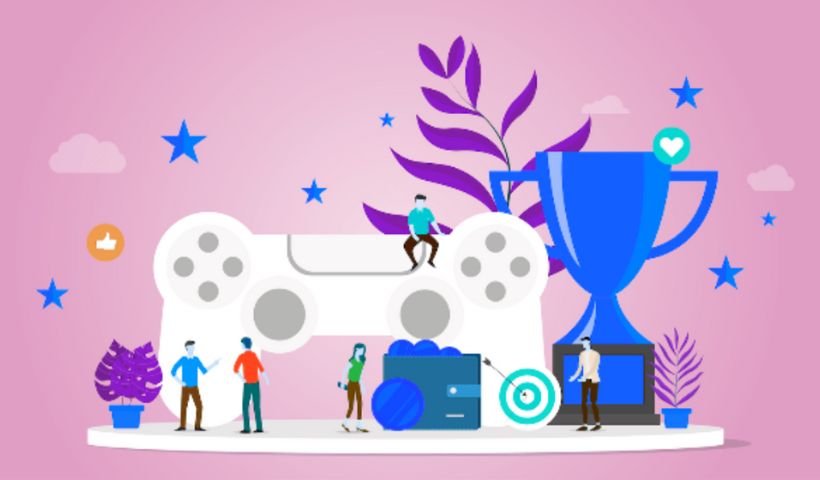Gamification : Wanting to increase the performance of employees based on pressure and penalties is to anchor yourself in old-fashioned methods doomed to failure. A much more effective strategy to motivate them is to integrate game elements into the day-to-day running of the company, a procedure that can also be applied to customer acquisition and loyalty.
Read on to find out in which areas this technique works best and how to apply it.
Table of Contents
What Is Gamification?
Gamification means game. Although there is an equivalent without anglicisms, gamification, the first is more commonly used.
What Do Both Terms Refer To?
Gamification describes the use of playful, or typical game elements, in a non-game context.
From birth, we all feel the need to learn, improve our abilities and compete with others. This is the instinct on which the games are based: through mechanisms such as riddles, different levels of difficulty, and prizes, players are motivated not to give up and to concentrate on a task.
By applying these principles in a non-game context, the motivation of the game acts by favoring problem-solving and resistance capacity, as well as facilitating the change in behavior patterns.
In this way, gamification turns the monotonous and boring perception of a task into an interesting challenge that motivates workers to work for the long term to solve complex problems.
Areas Of Application: In What Contexts Can Gamification Be Applied?
Gamification can be used in very different fields, such as business, research, (continuous) training of personnel, and crowdfunding or micro-patronage.
Since the playful instinct knows no age (even if it is sometimes somewhat hidden), the target audience of gamification can be very heterogeneous.
The Use Of Gamification In Business
Companies can take advantage of the fascination for the game from within, to motivate employees (gamification internal), or externally, to capture and retain new customers (gamification external).
These are the possible areas of application within the company:
- In quality management, to improve the available data.
- In the selection of new employees, to test the capabilities of the candidates.
- In the state of health of the staff: proposing, for example, sports competitions.
- In the continuous training of employees, to improve their learning.
- In product development, to increase customer loyalty.
- In marketing (on websites and apps, for example), to attract new customers.
- What forms can gamification take?
- There are countless types of games, and thus countless ways to gamify everyday tasks. However, there are some common elements at the base of every game that should also be part of the gamification strategy.to achieve the desired effects on the players.
Transparent And Easy-To-Understand Rules
In Parcheesi, for example, rolling a six allows you to roll the die again, but rolling it three times in a row means having to go back to the start. All games, whether tabletop or online, need clear rules that all players understand and know about beforehand. The same goes for gamification in the work context. For example, if an employee does not know how many points he will receive on the internal platform for his dedication, nor what rewards correspond to what number of points, he will not work as hard as someone who can count the points that are missing to earn a new tablet.
Realistic challenges
Every game has a task to perform or a puzzle to solve. Achieving it, however, should not be too easy, otherwise, the fun ends soon; but not too difficult either, so that the players or employees do not throw in the towel unmotivated. If this happened, the purpose of gamification would be lost, since it is precisely about making the task more intense and more attractive.
Direct feedback
Player activity should be followed by direct feedback so they can learn and improve based on positive or negative feedback. A game played blindly, not knowing whether each step is closer to the goal or not, soon loses its interest. Some examples of direct feedback are progress levels, mentions or badges, and point systems.
Recognition for the objectives achieved
Whoever managed to complete a task in the game should be rewarded, be it promotion to a new level, a material prize, or access to new content. The expectation of the reward is what motivates players to keep playing regularly. All gamification needs an element of compensation, especially if it is about motivating participants to interact often.
Interesting history
Much of the success of a game depends on the story it tells, that is, the universe in which the player is immersed. Just look at games as different as World of Warcraft and the various editions of the classic Cluedo. Gamification in the field of companies is not an exception.
Multiple players
Although there are games for one person, the participation of other players is a key factor in the fascination that the game provokes, whether they are opponents or members of the same team. In the business context, customers may act as rivals to each other, for example, or employees may work in teams to win honors or awards.
Also Read : 3 ways to improve company cybersecurity

